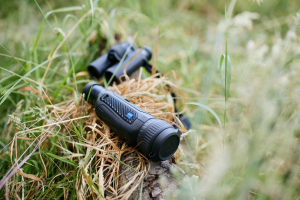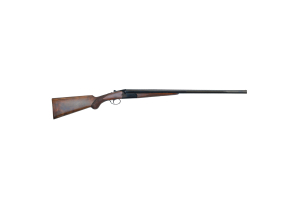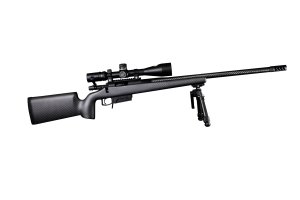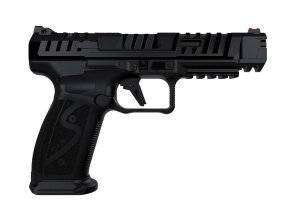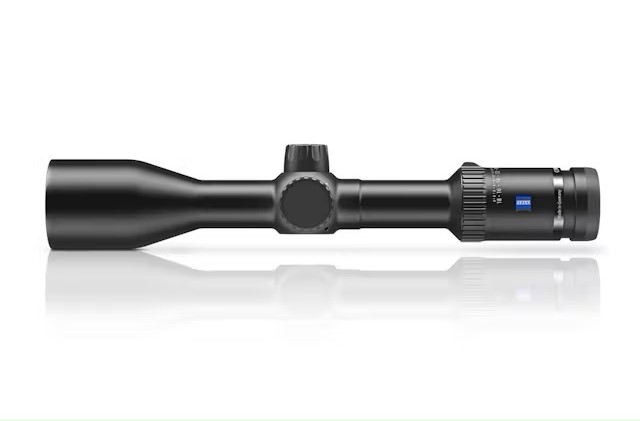
PRODUCT REVIEW - ZEISS Conquest V6
Con Kapralos hails the ZEISS Conquest V6
Perusing the Zeiss international and US websites, the flagship in their hunting riflescope optics range is the German-made Victory, with the HT and V8 being some of the most admired and technically advanced scopes money can buy. Yet not all of us can afford nor desire such top-flight glass and that’s where the Conquest V6 enters the scene.
The V6, being designed on a six-times magnification range, encompasses five models from the 1.1-6 x24 right up to the impressive 5-30x50 long-range model. Having owned and reviewed quite a few Zeiss scopes previously, the only model that’s escaped me is the highly-regarded V6 in 3-18x50 specification, which has been touted in the shooting press worldwide as the ultimate hunting riflescope. Outdoor Sporting Agencies, local distributor for Zeiss optics, sent Australian Shooter the Conquest V6 3-18x50 with No.6 reticle and ASV turrets installed. It arrived in the customary white Zeiss carton which is neatly magnetised for secure closing.
One side flap contains information pertaining to the model and reticle fitted to the scope. The V6 comes with a range of different reticles (model dependant), some being illuminated and turrets can be either the standard capped units or ASV.
External observations
The review scope is a compact unit, hence its appeal to hunters, measuring 338mm and weighing 630g. Weight-saving is achievable in that this model has the nonilluminated No.6 reticle and doesn’t carry any additional heft associated with electronic circuits and batteries. It’s made from a single piece of aircraft-grade aluminium with the main tube being 30mm in diameter and finished in a hard-anodised matte black.
The 50mm objective lens is contained in a 56mm housing, this front bell sloping down to the main tube diameter before it reaches the turret housing midships. Fore and aft of the housing is plenty of main tube for scope ring positioning. However to the rear is a 10mm ‘saddle’ on the main tube, which means scope rings can’t be ‘buttedup’ directly behind the turret housing. Why this is the case is a question for Zeiss engineers, though there’s still plenty of scope tube for the rear ring to be positioned.
Elevation and windage turrets on the review unit are of the ASV design. What that stands for is hard to ascertain, though in layman’s terms they’re ballistic compensating dials meant to be used in conjunction with Zeiss ballistics software. By zeroing in at the nominal 100m and using the software for your chosen calibre, you can quickly adjust for holdover and windage by simply clicking in the desired changes on the ASV turrets.
While it’s an excellent feature and handy for shooting extended distances, I’m oldschool and tend to dial-in my riflescopes for maximum point blank range (MPBR) and not worry about spinning turrets. However, the ASV elevation dial has a ‘zero-stop’ feature, handy for returning to your zero position. Additionally the vertical turret body is marked, so when rotating the elevation dial you can easily see how many rotations you’ve dialled in. Both elevation and windage ASV dials are ‘one click = ¼ MOA’ with elevation having 20 MOA increments marked in quarter graduations. The windage ASV dial is marked in 10 MOA increments to both the right (anticlockwise) and left (clockwise), though you can dial more than 20 MOA on both to a maximum of 60 MOA. Clicks on both dials are crisp and audible for precise adjustments.
Adjacent to this is the parallax adjustment dial which is marked only with ‘50’ and ‘∞’ and travels throughout this range very smoothly. It would be nice to have some indications of 100, 200, 300m as a minimum to help make initial adjustment a tad easier.
To the rear is the ocular housing which follows the sleek lines of the scope without being bulky or unsightly. It houses the magnification selection dial, fast-focus eyepiece and more lens elements which give the Conquest V6 a seamless ‘eye-box’.
Just place your eye behind the scope and you see through it effortlessly, no need to bob your head around. The magnification selection dial has a slim profile and serrated circumference, which allows the selector to be moved from 3x to 18x smoothly. There’s a large tab which is the reference point for the magnification setting with a small white dot beneath. Field of view runs at 12.4m on 3x down to 2.1m at 18x (at 100m).
The rear of the ocular housing carries the model, magnification and country of manufacture, so there’s no doubting this Zeiss optic is made in Germany. The fast-focus eyepiece immediately to the rear of the housing allows you to focus the reticle to suit and is easy to manoeuvre to the required setting. Eye-relief is generous at 90mm.
Internally
The strength of German-made Zeiss scopes is their glass. When you have optics pioneers such as Otto Schott, Ernst Abbe and Carl Zeiss collaborating 100 years ago, you expect the best in glass when it comes to Zeiss. The Conquest V6 range has 92 per cent light transmission and all lens elements have the best coatings and treatments as befits a top-tier product. Schott HT glass is standard in the Conquest V6 3-18x50 with Zeiss’ T* proprietary multicoating on their lens element giving unsurpassed light transmission.
Combining that with their LotuTec exterior lens treatment means dust and water are never a problem. Colour and clarity of images is excellent with hardly any chromatic aberration or colour fringing. The reticle is the non-illuminated No.6 which comprises two thick outer horizontal stadia and a single thicker one on the lower vertical aspect, a fine crosshair extending between these to the top of the viewing field. This results in a simple and uncluttered reticle without holdover or hash marks to confuse the operator. This scope also comes in other reticle options including illuminated ones.
At the range
The scope was mounted atop my custom Howa M1500 Sporter in 6.5 Creedmoor. This rifle usually carries a much lighter scope and mounting the review one brought the total weight to exactly 4kg, my maximum for a sporting or stalking outfit. Once the optic was bore-sighted and ‘hitting paper’ at 100m it was evaluated for its tracking, shooting ‘the square’ with all adjustments precise and repeatable.
The first and last shots (two in each case) overlapped each other, with other shots in the square being as expected, which befits a high quality erector tube assembly and associated componentry.
Shooting out to the 200m range maximum, images were ultra-clear and crisp, without any associated optical interferences or issues sometimes present on lesser-quality optics. The No.6 reticle was excellent in giving an uncluttered view of the target with the fine crosshair quite conducive to accurate shooting, standing out well against a variety of target backgrounds.
The Zeiss Conquest V6 in 3-18x50 specification has duly earned its reputation as one of the finest hunting riflescopes on the market. It’s not cheap, current retail pricing with the ASV option being around the $2500 mark. It is however German class made for the discerning hunter who demands quality.
Published by SSAA
July 2024 Australian Shooter, written by Con Kapralos


